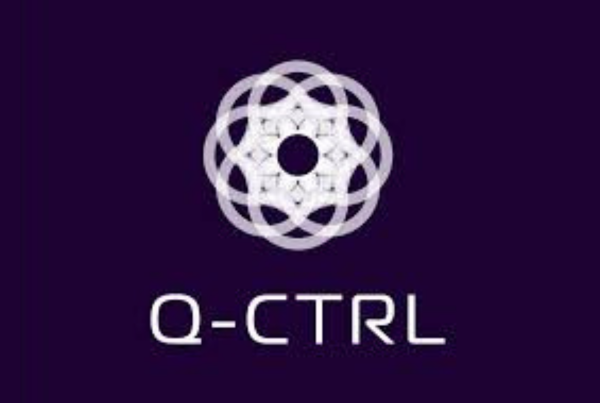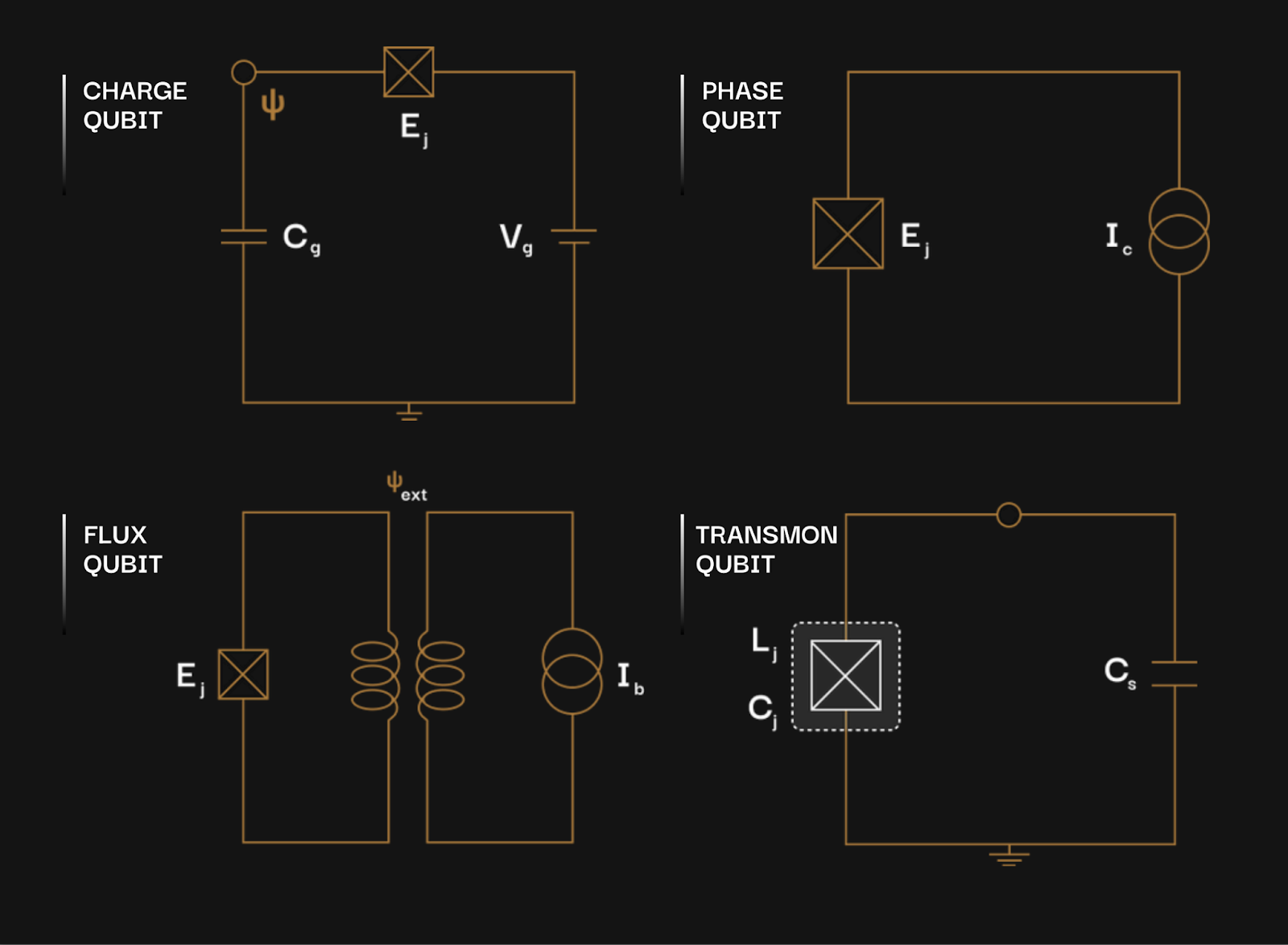
TECHNICAL BLOG
Resilient systems: OQC Toshiko and natural disasters
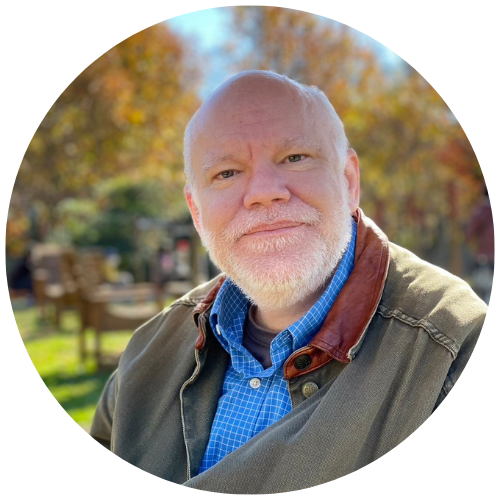
Todd Tilma
SENIOR QUANTUM ENGINEER
Todd is OQC’s Senior Quantum Engineer for our Japan Office. He is charged with maintaining the stability of OQC Toshiko. Before coming to work with us this past March, he was a house husband and enjoying life as a retired academic; being a former Associate Professor of Physics at Tokyo Institute of Technology. He earned his Ph.D. in Mathematical Physics in 2002 from The University of Texas at Austin and is the proud parent of two rescue cats.
When one thinks of quantum computers and natural disasters, the mind immediately turns to how they might mitigate the damage and suffering that such events inflict on us every year. We rarely discuss how we can mitigate the damage and suffering that such events inflict on them every year. Designing quantum computers that are resilient to real-world, out-of-lab effects is an important but often overlooked point that has the potential to become the defining characteristic of a successful quantum ecosystem or a failed one, as we rapidly grow towards a fault tolerant quantum computing (FTQC) future. It is expected that FTQC architectures must be as resilient and reliable as current classical computers – maybe not your laptop, but definitely the systems that exist in large-scale data centres – otherwise humanity will not be able to completely exploit FTQC to its fullest potential. And the fundamental building block in those architectures will be the qubit. Here at OQC we believe we have developed a qubit – the Coaxmon – for quantum computers that will not only scale to FTQC levels while still being able to mitigate a plethora of quantum issues, but will also be resilient to larger ones, like those from earthquakes, typhoons, and other large scale disasters. Our hope is that this design will allow us to bring quantum to humanity where humanity needs it the most.
Constructing the Coaxmon
The OQC Coaxmon is a variant of the industry standard transmon superconducting qubit. As one of Peter Leek’s students (Dr. Joseph Rahamim) noted: “The transmon is an anharmonic resonator that is used to approximate a two-level system that can be used as the qubit. First demonstrated in Phys. Rev. A 76, 042319, it has since become one of the most widely used implementations of a qubit… [f]avoured for its relatively simple design and robustness to noise.”1
As good as the transmon is, it has its limitations. Fortunately for us, our Founder and CSO Dr. Peter Leek found a way to decrease those limitations by thinking outside the substrate. What he has done, and OQC has capitalized on, is design the transmon qubit at left to couple to a coaxial electrode that sits outside of the plane of the substrate.2 Furthermore, the readout resonator has a similar look to it – because we also moved its readout wiring off the substrate!

The OQC Coaxmon is thus a 3D architecture that offers a multitude of benefits over other transmon-centric designs; in fact it is the “[s]mallest, simplest superconducting unit cell that is extensible”:
- Unit cell containing a qubit and a readout element which are coupled vertically.
- Qubit is often a transmon, but does not have to be and readout is often a LC resonator, but does not have to be.
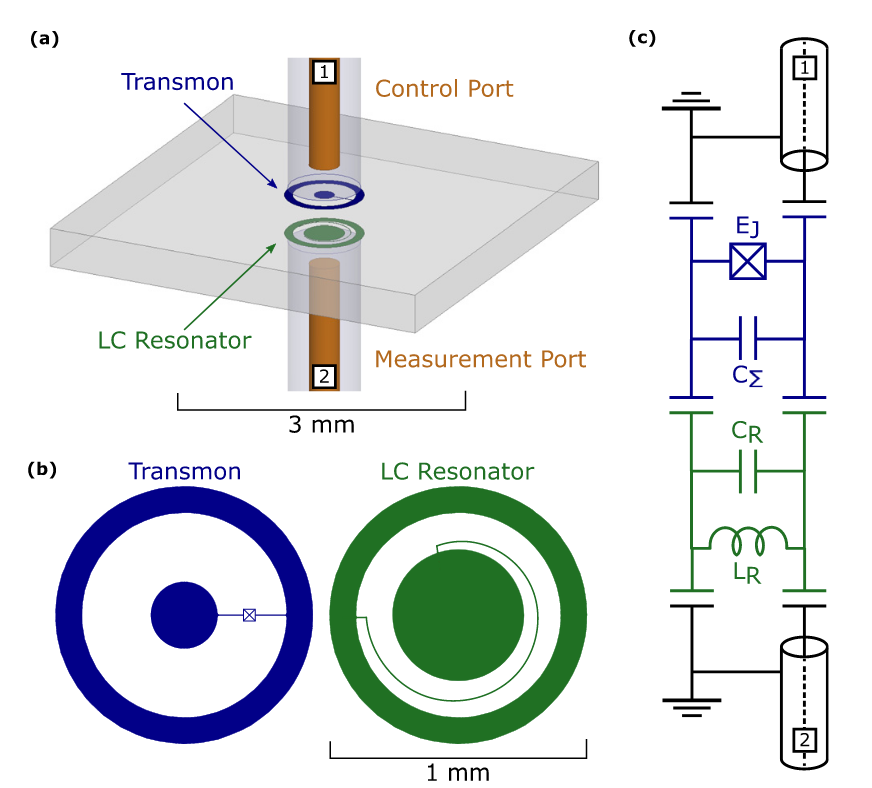
The OQC Coaxmon is suitable for extensible quantum computers in any data / customer heavy location on the planet, and is our bet to be the keystone of quantum computing – all the way from NISQ to FTQC.3
Serendipity and data centres
As a matter of principle (and control) many, if not almost all, quantum computing companies do not deploy their systems in data centres. Instead, they build their own “quantum data centre” or keep the machines in the lab; accessible via the internet. At the beginning, OQC was also one of those companies. Our first commercially deployed quantum computer – Lucy – ran for 2 years in our shop; staying cold 24hrs a day, seven days a week. This took a heroic amount of work by many, but it also allowed us to become extremely (I like to say super saiyan-level) proficient with the operation and handling of all things cryogenic when it comes to quantum computing. But, even with the success of Lucy, we learned from our human customers and Mother Nature that the way forward for future systems was to co-locate them in modern data centres.
The story of this paradigm shift in how quantum computers should be deployed has taken on legendary status within the halls of OQC. As it is told; during the Lucy deployment, a major storm threatened the English countryside. For our scientists and engineers, the fragility of their setup in the face of the storm drove home the need to place OQC’s next quantum computer in a location with built-in mitigation from such issues. This led to some serious “out of the box” thinking. In point of fact, it was wildly beyond the thought range of any quantum computing company at the time. Now, as our technical staff were trying to solve the problem of Mother Nature, a prompt from an important customer began to also challenge our business model with IT infrastructure / Data Sovereignty / Data Adjacency questions that we had not yet thought about. As luck would have it, two engineers at the nearby Cyxtera data centre, Charlie and Marcus, had become intrigued by the possibility of quantum computing. Through a mutual love of donuts, we discovered that they also shared our vision and thus helped our team by cutting through the usual red-tape; allowing OQC to rapidly bring in (what was then considered) exotic machinery into their data centre. We happily learned that Cyxtera was very open minded and wanted to beat everyone else in the world to be the first data centre with a commercial quantum computer!
In short, by learning how to deploy OQC quantum computers in Cyxtera (now Centersquare), we have been able to mitigate a myriad of technical issues in running and keeping a quantum computer up for long periods of time with a minimum of work on our side. OQC now has relationships with all major data centre providers and has written ‘the playbook’ on how to deploy upgradable, extensible quantum computers in any data / customer heavy co-location data centre on the planet.4 Fortunately for us, the UK is helping data centres to become even more robust and secure facilities.
Resilience in the face of disaster
In the United Kingdom, since September 2023, data centres have been considered “CNI” – critical national infrastructure. This puts them at the same level as “water, energy and emergency services systems” and they can now expect greater government support in “recovering from and anticipating critical incidents, giving the industry greater reassurance when setting up business in the UK and helping generate economic growth for all.”5 The reasoning behind this new classification was partly based on the observation that data centres now constitute “critical elements of infrastructure of which the loss or compromise could result in major detrimental impact on essential public services, emergency systems, national security, defence, or the functioning of the state.”6
The hope is that, through the CNI designation, a more secure and stable investment environment for data centre expansion in the UK can be achieved. Expansion of the number of datacentres in the UK is important for OQC because currently “[t]he UK hosts the largest number of data centres in Western Europe, generating an estimated £4.6 billion in annual revenue, and is a key hub for connectivity worldwide.”7 We plan to be able to deploy in any co-location data centre globally – both efficiently and effectively – but it was another bit of serendipity that led us to look to the East for our next data centre expansion.
OQC in Japan
In 2023, OQC deployed its latest quantum processing unit (QPU), the 32-qubit OQC Toshiko Gen1, and its supporting systems, to Equinix’s TY11 Tokyo International Business Exchange™ (IBX®) data centre. Why Japan, you may ask? Well there are many reasons, but for me the most obvious and beautiful is our company’s policy of naming QPUs after famous female scientists (for example, Lucy – Lucy Mensing). Our 32-qubit QPU is named after Toshiko Yuasa – a nuclear physicist who spent most of her career in France but is regarded as Japan’s first female physicist. I ask you, where else would one deploy their first 32-qubit system but in the homeland of its namesake.
Since last summer, OQC Toshiko Tokyo-18 has been accessible to users from around the world, even during measurable earthquakes and typhoons. From what I have heard, Toshiko’s ancestors in the UK are definitely proud of her survivability in the face of the “Ring of Fire” (and her caretakers in Tokyo are as well). But why are we crowing about her operational capacity in the face of difficulty? Could it be that her modality is tailor-made for surviving natural disasters better than others? Let’s take a look.
A modicum of modalities and earthquakes
Currently, there are a handful of quantum systems that are being looked at as building blocks – qubits – for QPUs: superconducting Josephson junctions, trapped ions, neutral atoms, doped silicon, quantum dots, and even packets of light (otherwise known as photonics). From an engineering perspective, each modality has its own benefits and drawbacks; but for us, is the “system” itself – the QPU and its control hardware – resilient to, say, a small earthquake?
| Super Conducting | Trapped Ions | Neutral Atoms | Doped Silicon | Quantum Dots | Photonics | |
|---|---|---|---|---|---|---|
| PROS | High gate speeds and fidelities | Extremely high fidelities and long coherence times | Long coherence times and no need for cryogenics | High gate speeds and fidelities | Uses existing semiconductor technology | Extremely fast gate speeds |
| CONS | Microwave interconnects are challenging | Laser alignment and control is challenging | Laser alignment and control is challenging | Electronic control issues | Electronic control issues | Lack of natural interaction |
For any installation of a quantum computer, the stability of the QPU is paramount. In general a quantum computer will have to deal with temperature, pressure, humidity, and other physical changes to its operating environment; just like any other large-scale computing system. The added challenge to quantum is to make sure that those macro-scale issues minimally impact the QPU. For example, in a minor earthquake the building the quantum computers are in will shake, even with mitigation techniques such as seismic damping, and that shaking will be transferred to the system; inevitably that will be seen in the QPU as heat. Since her deployment, our OQC Toshiko Gen1 system, which uses superconducting qubits, has experienced a handful of earthquakes that have registered on the QPU directly.
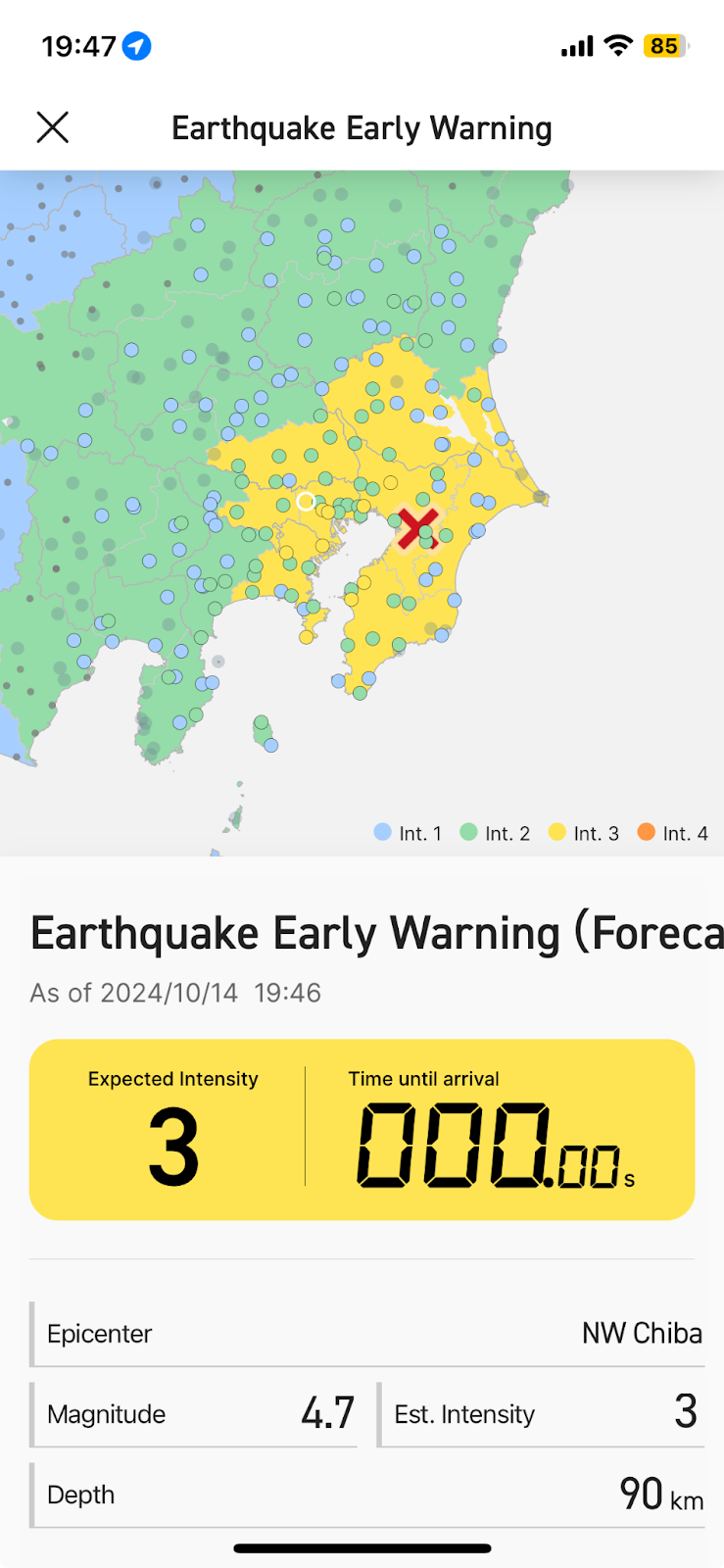
Fortunately, the seen temperature change is still well within the operating envelope of the QPU; in fact there was little to no impact on running operations during this and other such events. On the other hand, a system that, say, uses lasers or other optics, will lose alignment quite easily; and once lost can take many hours to recover and reset the system. How do we know? Because the U.S. National Science Foundation Laser Interferometer Gravitational-wave Observatory (LIGO) uses similar technology and it still has issues with, for example, tumbleweeds!9
Weather woes
Earthquakes are not the only natural disaster we think about. Typhoons and other such events can impact the operation of our quantum computers. Long hours of high winds and rain will again create vibrations in the building housing the quantum computers, and those vibrations will be transmitted to the QPU again, as heat, in due course. Fortunately for us, unlike minor earthquakes, the vibrations caused by typhoons are barely a blip on the temperature of our QPU. In fact, operational temperature changes are larger than those caused by the vibrations from typhoons.
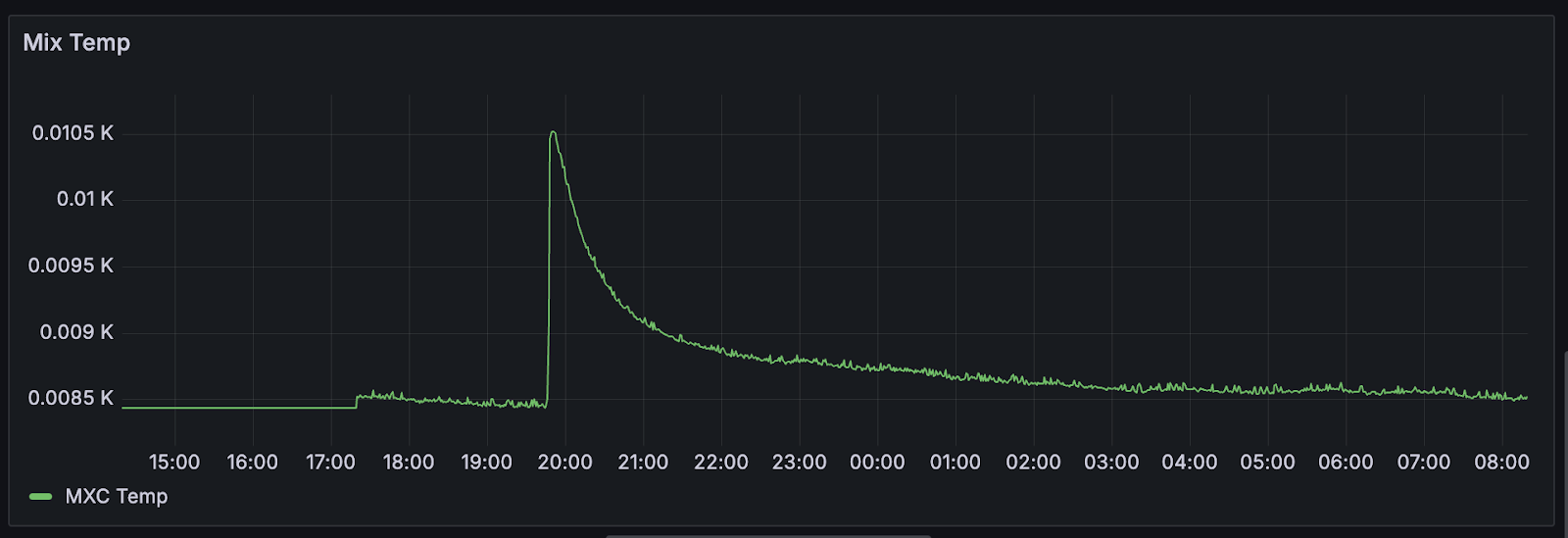
What does this all mean
To conclude, it is my belief that certain quantum computers architectures will be more robust than others in areas where Mother Nature is a bit more active than usual. For example, OQC Toshiko Tokyo-1 is on the 5th (and top) floor of the Equinix data centre, and she is still running stable, strong, and superb! Our data and experience suggests that our superconducting modality will be able to be deployed across a larger swath of the planet than, say, a modality that uses lasers. For us, this means that more people will have the possibility of having an OQC system in their locale; thus fulfilling our core mission of bringing quantum into the hands of humanity.
It’s still early days… Much is still needing to be done, and we do not have all the answers; but we are enjoying what Mother Nature is teaching us!
- Rahamim, J. (2019). Development of a coaxial circuit QED architecture for quantum computing [PhD thesis]. University of Oxford.
- This is similar to concentric (Appl. Phys. Lett. 108, 032601 (2016)) and aperture (Phys. Rev. Applied 7, 044018) transmons.
- For more, see https://oqc.tech/tech/coaxmon/
- https://www.nlyte.com/faqs/what-is-a-colocation-data-center/
- https://www.gov.uk/government/news/data-centres-to-be-given-massive-boost-and-protections-from-cyber-criminals-and-it-blackouts
- https://blog.burges-salmon.com/post/102jjyx/data-centres-given-critical-national-infrastructure-status-in-uk-what-does-this
- https://thelens.slaughterandmay.com/post/102jj5n/designating-uk-data-centres-as-critical-national-infrastructurea-new-era-of-gro
- https://int.cloud.oqc.app/qpu_status/qpu:jp:3:673b1ad43c
- https://inspirehep.net/literature/530499
Join our newsletter for more articles like this
By clicking ‘sign up’ you’re confirming that you agree with our Terms & Conditions


